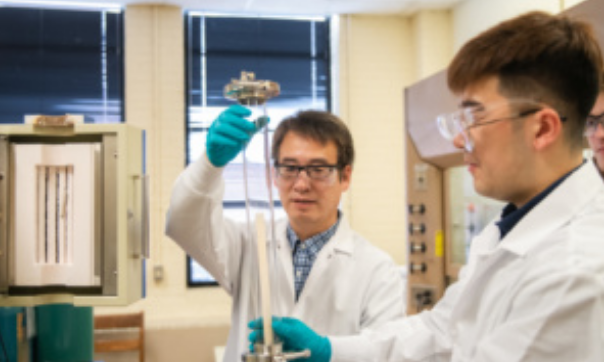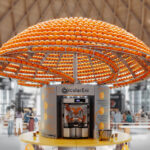

We’re all familiar with that highly inconvenient moment of finding out your phone battery is dead (or worse, that the charger cord or cube is no longer functional for some often, unknown reason) or that the electric car is running out of ‘juice.’ As progress in technology just continues to climb to higher levels, however, you may find that you can take control of battery power with 3D printing. And while that is not exactly a new concept, it is becoming even more realistic thanks to recent research from Clemson University.
A laser-based 3D printing process may be able to create energy—along with enormous amounts of storage. Jianhua “Joshua” Tong, associate professor of Materials Science and Engineering at Clemson, is behind the project, which streamlines the manufacturing of electrolyzers using devices made of ceramic material. Tong explains that their innovative devices could actually use hydrogen to harness and store solar—or even wind—energy and use it to power larger items like cars.
“Our success will mean we can provide sustainable, clean energy,” Tong said. “That is the fantastic part. We are taking 3D printing to the next level.”
This research involving 3D printing was performed at Clemson’s Department of Materials Science and Engineering, where Tong also worked with Hai Xiao, Kyle Brinkman and Fei Peng. Because manufacturing of ceramics for industrial use has historically been very expensive, their goal was to create a manufacturing process that is affordable and realistic for modern applications.

Their process makes use of some of the greatest benefits in 3D printing, including better savings on the bottom line and greater speed in production, mainly due to their bypassing the need for a furnace to produce the electrolyzer. This could be extremely useful in terms of making fuel, as well as offering new potential in the creation of other products such as smartphone batteries with the possibility to stay charged for several days. Considering most of us are running low on battery power by the end of the day (or even more quickly), such products could be a real boon to the smartphone/battery industry overall. Using protonic ceramic electrolyzer stacks the team can let hydrogen act as a fuel store for batteries. By sintering and depositing the different ceramics needed simultaneously the team can make these energy storage devices in a completely new way. This is yet another application where we can see 3D printing used to bring changes to batteries.
The researchers also found that 3D printing offered incredible ease in production because of the ability to create a 3D design that can be emailed to another individual or company getting ready to 3D print a component or prototype. 3D design also means that prototypes can be changed easily in digital fashion—rather than working with a middleman who must go back to the drawing board for most changes.
The use of 3D printing integrated with other processes such as electronics offers infinite opportunities for designers and engineers hoping to create more streamlined works for users around the world. Find out more about Materials Science & Engineering at Clemson here.
What do you think of this news? Let us know your thoughts! Join the discussion of this and other 3D printing topics at 3DPrintBoard.com.
[Source: Design News]
If you're looking to get architectural 3D animation in the USA, our service provides an exceptional way to bring your architectural concepts to life through dynamic, immersive visuals. Through our platform, you can easily request high-quality 3D animations that showcase your designs in motion, offering a detailed view of your project from multiple angles and perspectives. Whether it's for a real estate development, a commercial building, or an urban planning project, our expert team ensures that every detail is captured in a visually compelling animation.
Through our website, you can seamlessly get architectural 3D animation tailored to your project’s specific needs. With our help, you can offer potential clients or investors an engaging experience that goes beyond static images. By integrating CGI animations with real-world settings, lighting, and textures, our team creates a lifelike experience that allows your audience to interact with your project as though it were already built. This service is perfect for presenting complex designs in a clear, visually attractive way that stands out in the competitive architectural market.




